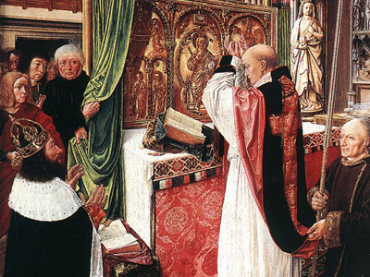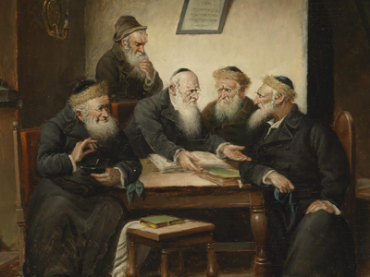Religion
Codex 2400 and Its Miniatures
Series: Analecta Gorgiana 990
ISBN: 978-1-61143-943-4
This work contains illustrations of the thirteenth century Byzantine New Testament at the Rockefeller-McCormack collection in Chicago with a full description of its text, provenance, and the artistic and theological significance of the miniatures.
$48.00
Études sur les Soubbas ou les Sabéens
Leurs dogmes, leurs moeurs
Series: Gorgias Mandaean Studies 4
ISBN: 978-1-61143-953-3
The mythology, history, and ritual of the Mandaeans, with an account of their clergy, ritual, language, and numbers, written by a Syriac Christian who was French consul in Mosul for twenty years.
$139.00
La Mas’alat al-kana’is de Ibn Taymiyya
Series: Analecta Gorgiana 1031
ISBN: 978-1-4632-0020-6
An extract from Collectanea Christiana Orientalia (2008)
$39.00
Kubaba 1 (2010)
Journal of Ancient Southwest Asia and Eastern Mediterranean Studies
Series: Kubaba 1
ISBN: 978-1-4632-0144-9
Kubaba is a peer-reviewed journal which specializes in the geographical region of Southwest Asia, the Eastern Mediterranean, and the Aegean before the Classical Era. It publishes articles, notes, news and reviews.
$52.00
Manchester Journal of Jewish Studies (2010)
Editors Daniel R. Langton & Renate Smithuis
ISBN: 978-1-4632-0055-8
Melilah is an interdisciplinary peer-review journal concerned with Jewish law, history, literature, religion, culture and thought in the ancient, medieval and modern eras. Contributors (2010) include Simon Mayers, Z. Yaakov Wise, Ed Kessler, Hyam Maccoby, and Glenda Abramson.
$57.00
Authority Within the Christian Church
By Peter Lee
ISBN: 978-1-61143-957-1
At the present time, when authority for the church's beliefs and actions is the subject of much discussion, this book attempts to look to the authority of God, Jesus Christ, and the Holy Spirit, and how these are transmitted within apostolic tradition by word, actions, and writings. Elements giving weight to authority (co-inherence, consistency, and universality) are examined along with the scope and limits of interpretative tradition.
$86.00
Assumptions in the Study of Hebrew Bible Narrative
ISBN: 978-1-4632-0034-3
The foundational period of Hebrew Bible scholarship promulgated the assumption that the original “authors” were incapable of the sophisticated literary technique displayed in that work. Complexity was ascribed to a later stage. Yet in that later stage the supposedly more sophisticated redactors were unable to see blatant contradictions and redundancies. This work investigates Genesis, Judges, Samuel, Kings, and Chronicles looking at how the message conveyed has been misunderstood through assumptions about the capacities and intentions of original writers. It shows how retaining the assumptions about the inability of early writers inevitably leads to conclusions of a late provenance.
$206.00
The Latent Trace of Islamic Origins
Midian’s Legacy in Mecca’s Moral Awakening
By John Jandora
ISBN: 978-1-60724-045-7
This work presents a putative reconstruction, testing the hypothesis that Islam is historically linked to Jewish Christianity. The argument takes the Qur’anic text to be a valid start-point for historical inquiry and reconstructs from biased views of Jewish Christianity the notion of an enduring Nasorean movement. The effective link between the Nasorean movement and the Meccan religious awakening is the preaching of the Qur’anic Prophet Shu’ayb in Midian, on the border of Arabia.
$176.00
Fifty Years in Constantinople and Recollections of Robert College
By George Washburn; Introduction by Devrim Umit
ISBN: 978-1-4632-0028-2
George Washburn’s memoir describes characters and events during his presidency of Robert College (1877–1903), the first American missionary college in the Ottoman Empire and the Near East, and the first American college founded outside the United States, as well as the rivalry between the declining Ottoman Empire and the rapidly growing United States.
$210.00
Exegetische Studien zum Septuagintapsalter
Series: Analecta Gorgiana 32
ISBN: 978-1-4632-0030-5
A series of exegetical studies on the Septuagint psalter, focusing particularly on the extent to which the religious ideas and practice of the translators have influenced the translation and distinguished it from the Hebrew original.
$53.00
Terms for Eternity
ISBN: 978-1-61143-970-0
What is truly timeless? This book explores two ancient Greek terms for eternity, aiônios and aïdios. It traces these terms from their earliest occurrence in Pre-Socratic philosophy and Plato and through their interaction with Jewish thought and down into the patristic fathers, where they play a crucial role in debates over eternal punishment vs. universal salvation.
$149.00
Good vs. Evil
ISBN: 978-1-61143-968-7
Three friends go to the library one day and check out a book titled Good vs. Evil. They start reading the book, but soon they find themselves in the story. Find out about the adventures they endure to get out of the book and back into their own world.
$18.00
The East Syriac Psalm Headings
A Critical Edition
By HF Van Rooy
Series: Texts and Studies (Third Series) 8
ISBN: 978-1-61143-867-3
The Psalm Headings remain one of the most difficult and puzzling pieces of the Hebrew Bible. The present study looks at how these titles were treated in the East Syriac traditions. This volume gives a history of research and presents a new critical edition based on previously unpublished manuscripts. The Psalm headings in the East Syriac tradition reflect the exegesis of the Antiochene school, especially Diodore of Tarsus and Theodore of Mopsuestia. The headings contain a summary of Theodore's exegesis which had an important influence on the work of Syriac interpreters such as Ishodad of Merv and Bar Hebraeus.
$154.00
Journal for Late Antique Religion and Culture
ISBN: 978-1-4632-0052-7
The Journal for Late Antique Religion and Culture (JLARC) is a peer-reviewed open access online journal edited by members of the Cardiff Centre for Late Antique Religion and Culture (CLARC) and published by Cardiff University (http://www.cardiff.ac.uk/clarc).
$50.00
Bemerkungen zu dem hebräischen Texte Jesus Sirachs und seiner neuesten Übersetzung
By J.C. Matthes
Series: Analecta Gorgiana 29
ISBN: 978-1-4632-0060-2
Text-critical notes on Dyserinck's edition and Dutch translation of the Hebrew text of Sirach.
$34.00
The Unbearable Flaming Fire
Edited by Mishael M. Caspi & John T. Greene
Series: Biblical Intersections 10
ISBN: 978-1-4632-0160-9
This anthology on Eve brings together an international group of scholars to discuss how this character has been interpreted by Judaism, Christianity and Islam. In a time when the history of women is being reassessed, it is natural that women look to the paradigmatic female figure. This treatment of Eve covers her wide range of roles as mother of our race, victim, stooge, wife, companion, independent thinker, and “helper”. A venerated figure by many modern feminists and a denigrated figure by those who blame her for original sin, no reader will leave these pages indifferent to the first woman.
$129.00
Bar Hebraeus The Ecclesiastical Chronicle
An English Translation
Translated by David Wilmshurst
Series: Gorgias Eastern Christian Studies 40
ISBN: 978-1-4632-0535-5
The Ecclesiastical History of Bar Hebraeus is an important source for the history of the Syrian Orthodox Church and the Church of the East. It deserves to be widely read, but has never before been fully translated into English. David Wilmshurst, a noted historian of the Church of the East, has now provided a graceful and accurate English translation of the Ecclesiastical History, with the aim of winning this important text the readership it deserves. Wilmshurst's elegant translation is complemented by a well-informed and helpful introduction, several pages of maps and a comprehensive index of places and persons.
$229.00
Women in Aphrahat
Some Observations
By Adam Lehto
Series: Analecta Gorgiana 1039
ISBN: 978-1-4632-0087-9
Fourth-century Aphrahat is characterized as misogynist, especially when he compares women to Satan. This may be an unintended result of contemporary Christian literature. The the eschatological context of Aphrahat’s asceticism, salvific role of Mary, victimization in Aphrahat’s work, and positive statements about women negotiate this view.
$35.00
The Essential Lightness of Being
Series: Analecta Gorgiana 1041
ISBN: 978-1-4632-0089-3
This is a preliminary study of aspects of the spiritual development of Hindiyya ‘Ajaymi, a Syro-Lebanese religious woman who lived from 1727–98. Highlights include her mystical experiences as well as later compositions for her religious community.
$36.00
Repentance and Fasting from an Ascetical Perspective
A Comparative Reading of Jacob of Serugh and an Unpublished Shortened Version of a Collection of Homilies by Severus of Antioch
Series: Analecta Gorgiana 1043
ISBN: 978-1-4632-0091-6
Saints Jacob of Serugh and Severus of Antioch provided monastic interpretations for Syriac Orthodoxy. Bcheiry highlights St. Jacob’s exegesis of Jonah as a spiritual struggle with ascetic appearances. St. Severus address the movement from self-deial to purity in his Lenten homilies.
$37.00
Jacob of Serugh, the Man Behind the Mimre
Series: Analecta Gorgiana 1044
ISBN: 978-1-4632-0092-3
Credited by Dinno as the epitome of Syriac spiritual heritage, Mor Jacob of Serugh interpreted the physical world with the hidden realities of God. A prominent theme in Mor Jacob's mimre is the economy of salvation.
$35.00
Mar Jacob of Serugh on Monks and Monasticism
Readings in his Metrical Homilies ‘On the Singles’
Series: Analecta Gorgiana 1045
ISBN: 978-1-4632-0093-0
Griffith discusses “On the Singles”, mimre by Mar Jacob of Serugh, for their reflections of Syrian monastic development. Following a biography and detailed literary analysis, Griffith examines the broader context of regional monastic literature for Mar Jacob’s possible influences.
$35.00
The Syriac Orthodox Celebration of the Eucharist in Light of Jacob of Serugh’s Mimro 95
By Amir Harrak
Series: Analecta Gorgiana 1046
ISBN: 978-1-4632-0094-7
Jacob of Serugh's “Mimro 95” details the significance of the Eucharist and spiritual benefit for participants. Harrak divides verses of this commentary in order to relate stages of liturgy within the Pre-Anaphoric and Anaphoric services of 6th century Syriac worship.
$36.00
Jacob of Serugh, Homily on Good Friday and Other Armenian Treasures
First Glances
Series: Analecta Gorgiana 1048
ISBN: 978-1-4632-0096-1
Jacob of Serugh's Armenian version of “Homily on Good Friday” is most likely from the reign of Gregory III Pahlawuni (1113–1166 AD). Mathews provides its transcription, commenting that scholarship is widely unaware of Jacob of Serugh’s existing works in Armenian.
$37.00
Jacob of Serugh and His Influence on John of Dara as Exemplified by the Use of Two Verse-Homilies
Series: Analecta Gorgiana 1049
ISBN: 978-1-4632-0097-8
Some of John of Dara’s 9th century treatises survive in Codex 356 in Mardin, in which Jacob of Serugh is called “Jacob of Batnan”, “Jacob”, and titles of respect. This article describes Jacob’s significant influence, comparing two-verse homilies in detail.
$39.00
Filter by
Filter by price
Filter by manufacturer



























